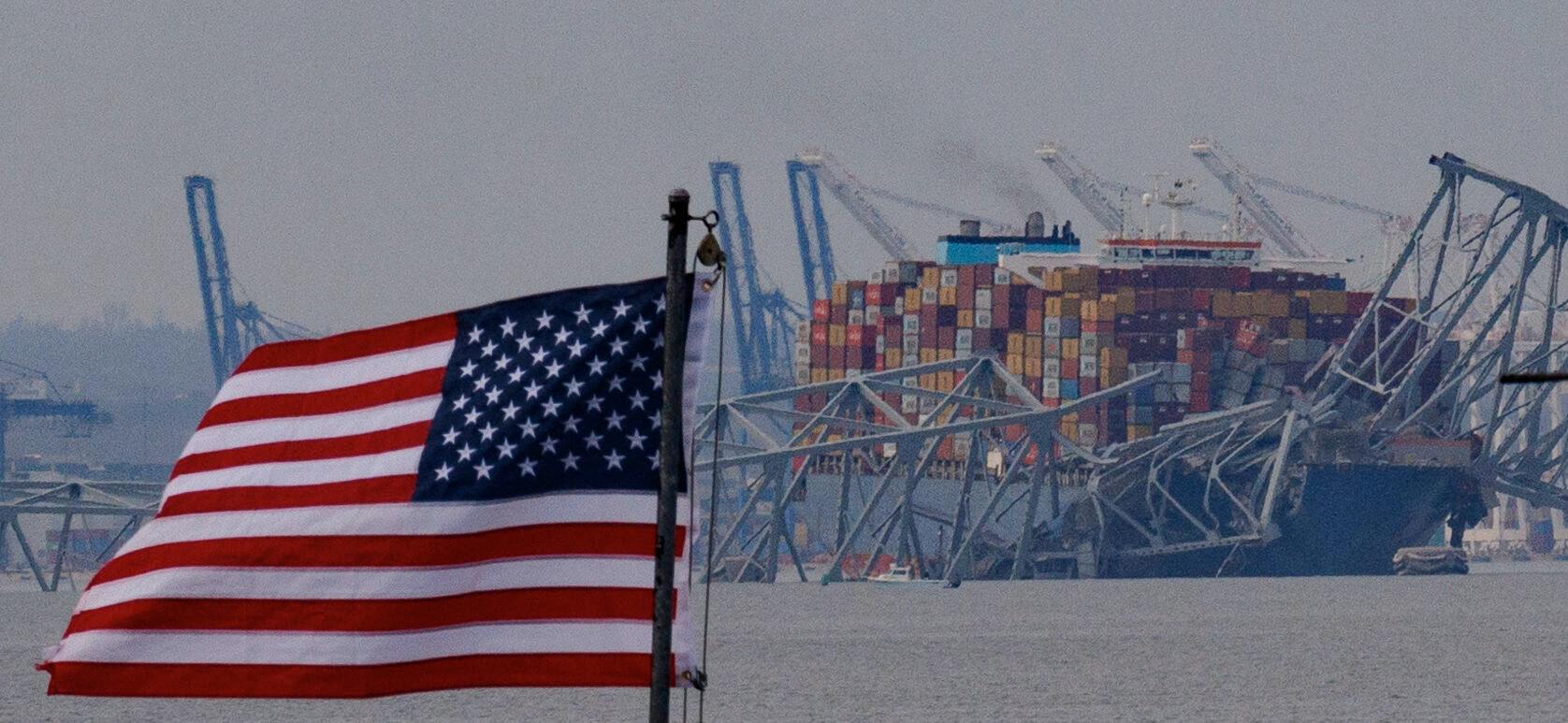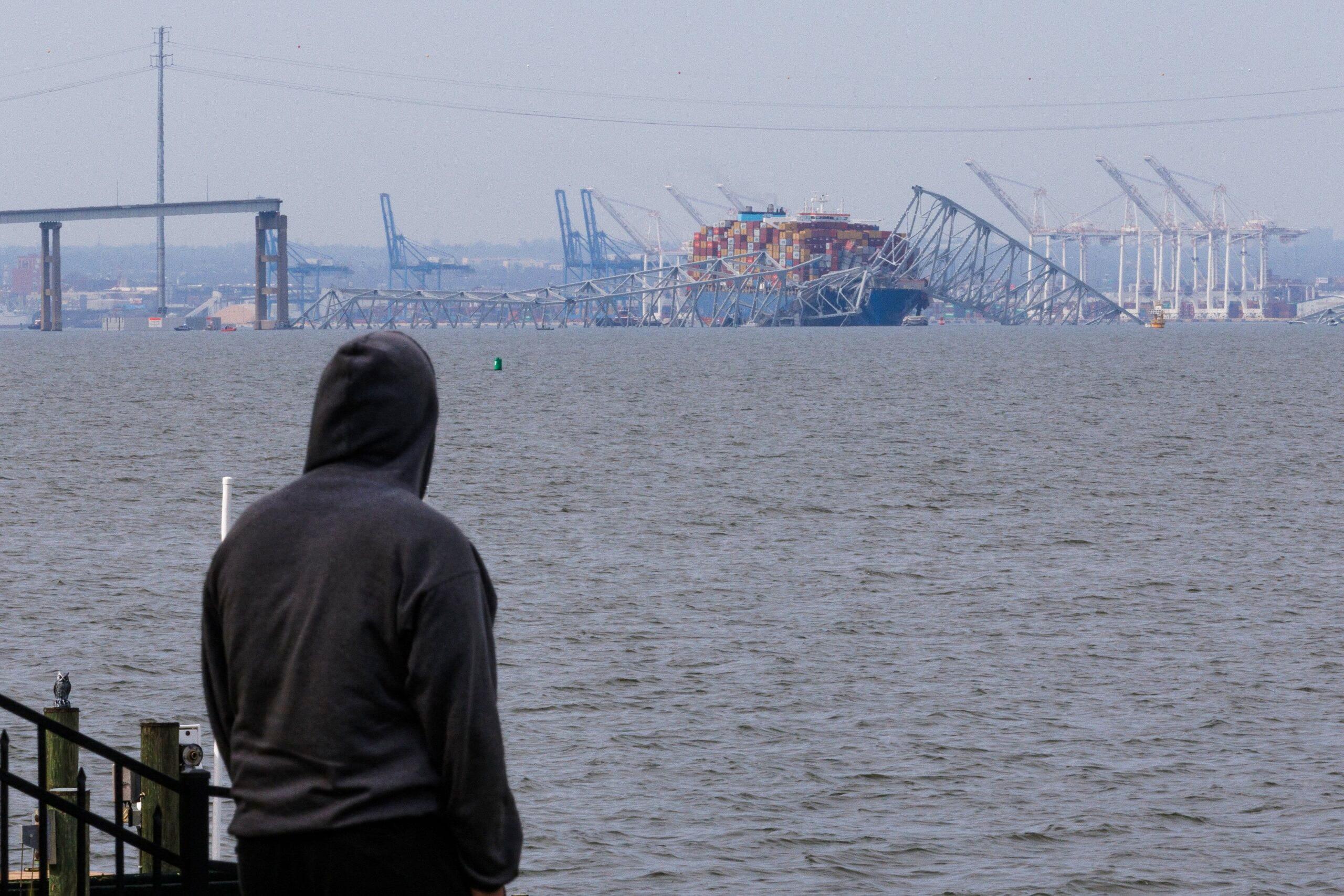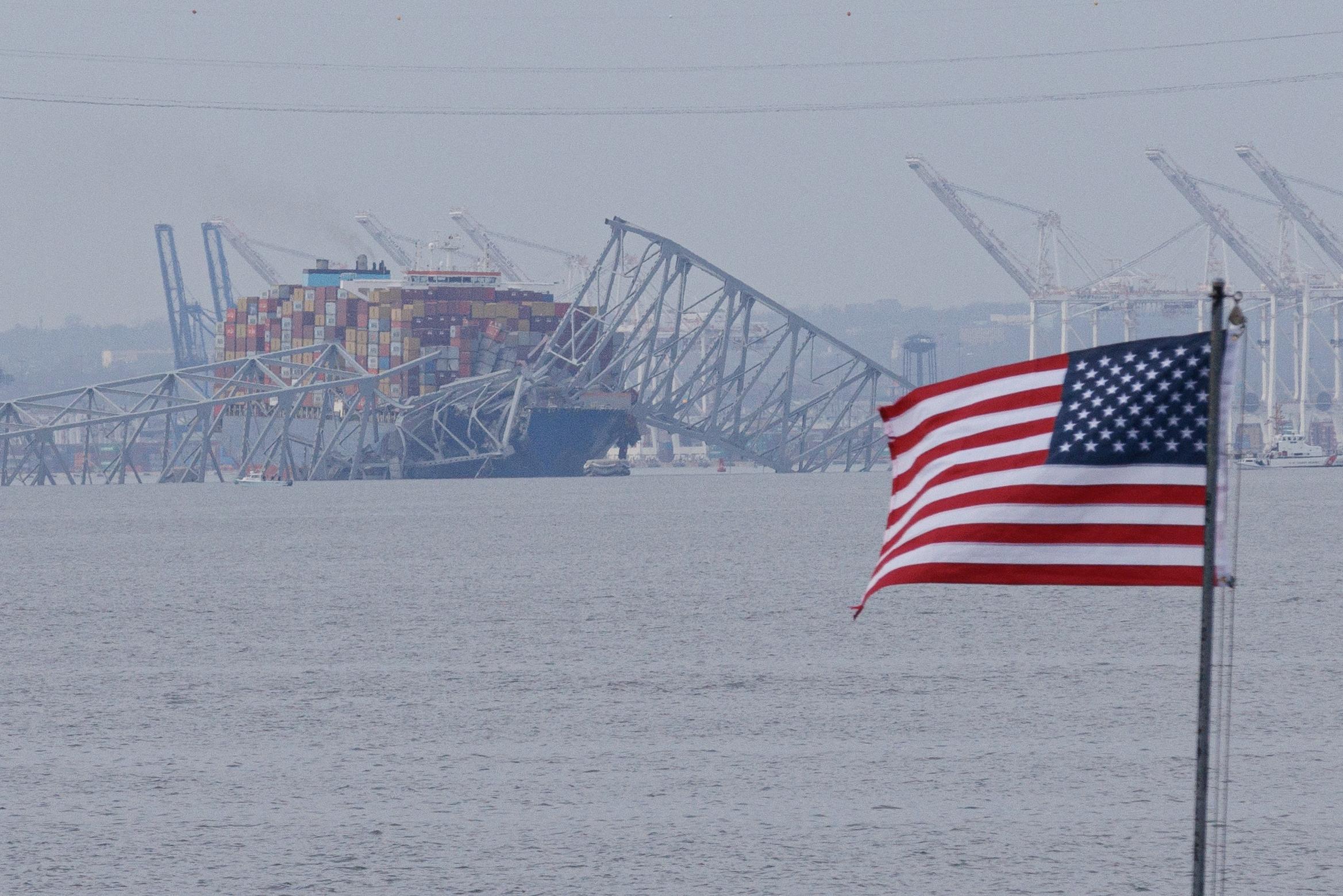Baltimore Bridge Collapse Allegedly Not Giant Cargo Ship's First Rodeo
By Afouda Bamidele on March 27, 2024 at 12:05 PM EDT
Updated on March 27, 2024 at 12:06 PM EDT

The large cargo ship responsible for the collapse of Baltimore's Francis Scott Key Bridge seems to have a troublesome history with ports.
A concerned social media user recently drew attention to the vessel's past following the newly released audio from first responders, which was recorded just moments before the bridge crashed in the early hours of Tuesday morning.
The Dali Also Allegedly Crashed Into A Belgium Port

In the comment section of the TikTok video, an individual claimed the Dali, the cargo ship that struck Baltimore's Francis Scott Key Bridge, is an infamous troublemaker. The social media user wrote:
"What's messed up is that the same ship a few years back crashed into a port in Belgium. I'm going to just say it: this is cursed/poorly maintained."
The TikTok user's claims are not far from what The USA Today reported noting the Dali had been involved in at least one accident before it crashed into Baltimore's Francis Scott Key Bridge.
In 2016 the large cargo ship allegedly collided with a shipping pier in Belgium. The incident occurred as the Dali was leaving the port in Antwerp and struck a loading pier made of stone.
The collision reportedly caused damage to the ship's stern, and an investigation later determined the incident was caused by a mistake made by the ship's master and pilot.
Fortunately, no one was injured in the crash, but the Dali required repair and a full inspection before it returned to service.
The Dali Was Chartered By The Same Person In Both Incidents

During the Dali's 2016 incident at a shipping pier in Belgium, the vessel was allegedly chartered by Maersk — the same company that was reportedly chartering it when Baltimore's Francis Scott Key Bridge collapsed.
Although the 9-year-old container ship had allegedly passed its previous inspections at sea, it raised concerns in June at the Port of San Antonio in Chile.
Officials reportedly discovered a deficiency with its "propulsion and auxiliary machinery (gauges, thermometers, etc)."
However, the report did not provide additional details about the deficiency except to note that it was not severe enough to remove the ship from service.
As investigations are ongoing, it remains unclear if this claim played a part in the Dali's collision with the bridge.
What Went Wrong On The Dali?
While officials continue investigating the mystery behind the Dali's crash, one source claimed the incident could be related to mechanical failure. They stressed that accidents at sea, known as marine casualties, are common.
However, the Dali's case was far less common as it fell under "allisions." This type of incident occurs when a moving object strikes a stationary one with catastrophic results.
The source explained that investigation of the power loss aboard the Singapore-flagged vessel will be a high priority. This is because a video shared on social media showed the lights on the Dali shut off and then come back on before going off again.
The alleged power loss occurred before the cargo ship struck one of the support pillars, causing the chain reaction that plunged Baltimore's Francis Scott Key Bridge into the river.
The Dali's Captain Allegedly Tried To Stop The Ship

Clay Diamond, executive director of the American Pilots' Association, noted that power issues are common on cargo ships. However, they are typically temporary, while the Dali case was not.
"This was a complete blackout of all the power on the ship, so that's unusual. Of course, this happened at the worst possible location," Diamond explained, noting that this happening on a cargo ship was an unfortunate situation as they are so large that they cannot be easily course-corrected.
"There was still some steerage left when they initially lost power. We've been told the ship never recovered propulsion. The emergency generator is a diesel itself – so if you light off the generator, that's also going to put off a puff of exhaust," he continued, adding:
"The pilot was directing navigation of the ship as it happened. He asked the captain to get the engines back online. They weren't able to do that, so the pilot took all the action he could."
"He tried to steer, to keep the ship in the channel. He also dropped the ship's anchor to slow the ship and guide the direction. Neither one was enough. The ship never did regain its engine power," Diamond lamented.
The Bridge's Collapse Was Declared As A 'Mass Casualty' Event

According to Kevin Cartwright, director of communications for the Baltimore Fire Department, the Francis Scott Key Bridge collapsed around 1:30 am. He addressed the severity of the situation in a statement, saying:
"This is currently a mass casualty incident, and we are searching for seven people who are in the river."
Cartwright echoed similar sentiments in another statement, noting, "This is a dire emergency. Our focus right now is trying to rescue and recover these people."
Other sources shared more details about the bridge's collapse, with some claiming the ship caught fire and several vehicles had plunged into the river below.